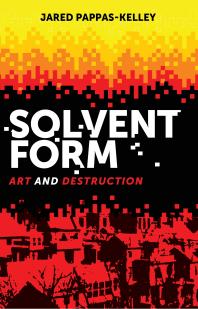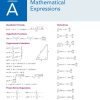Solvent Form Art and Destruction 1st Edition by Jared Pappas Kelley ISBN 1526129248 978-1526129246
$50.00 Original price was: $50.00.$25.00Current price is: $25.00.
Solvent Form Art and Destruction 1st Edition by Jared Pappas Kelley – Ebook PDF Instant Download/Delivery: 1526129248 978-1526129246
Full download Solvent Form Art and Destruction 1st edition after payment

Product details:
ISBN 10: 1526129248
ISBN 13: 978-1526129246
Author: Jared Pappas Kelley
This book is about the destruction of art, both in terms of objects that have been destroyed – lost in fires, floods or vandalism – and the general concept of art operating through object and form. Through re-examinations of such events as the Momart warehouse fire in 2004 and the activities of art thief Stéphane Breitwieser, the book proposes an idea of solvent form hinging on the dual meaning in the words solvent and solvency, whereby art, while attempting to make secure or fixed, simultaneously undoes and destroys through its inception. Ultimately, the book questions what is it that may be perceived in the destruction of art and how we understand it, and further how it might be linked to a more general failure.
Solvent Form Art and Destruction 1st Table of contents:
Preface
- Introduction to the Concept of Art and Destruction
- Acknowledgments
- The Role of Solvents and Chemicals in Artistic Practices
Chapter 1: The Art of Deconstruction
- Defining Deconstruction in Art
- The Role of Destruction in the Creative Process
- Historical Contexts: Art as Destruction
- Conceptualizing the Destruction of Artworks as a Creative Act
Chapter 2: Solvents and Chemicals in Artistic Practices
- Overview of Solvents and Their Role in Art
- Different Types of Solvents: Acrylic, Oil, and Solvent-Based Media
- The Interplay of Material and Solvent in Painting and Sculpture
- Toxicity and Ethical Considerations in Using Solvents
Chapter 3: Destruction as Medium: Case Studies in Art
- Artworks Created Through Destruction
- Famous Artists Who Used Destruction as a Medium
- The Role of Solvents in These Destructive Practices
- Case Study: Jackson Pollock’s “Drip” Paintings and Chemical Interaction
Chapter 4: Solvent-Based Techniques and Innovations
- Developing Techniques in Solvent-Based Artmaking
- Techniques of Distillation, Melting, and Erosion in Art
- Creating Texture and Movement Through Chemical Reactions
- Pioneers in Solvent-Based Artistic Approaches
Chapter 5: Destruction of Artworks: Intentional and Accidental
- The Fine Line Between Destruction and Accidental Damage
- Artistic Intent vs. Audience Perception of Destruction
- The Ethics of Destroying Art for Creative Expression
- Iconic Examples of Art Destruction in Contemporary Practice
Chapter 6: The Relationship Between Destruction and the Sublime
- Destruction as a Path to Sublime Artistic Expression
- Exploring Themes of Mortality, Transience, and the Impermanence of Art
- Destruction as a Reflection of Cultural and Political Landscapes
- Philosophical Perspectives on Destruction and Creation
Chapter 7: The Role of Technology in Solvent Art and Destruction
- Digital Tools for Simulating Destruction in Art
- The Impact of 3D Printing and Virtual Destruction on Artistic Creation
- Technological Innovations in Solvent and Chemical Art
- The Future of Destructive Art in the Digital Age
Chapter 8: The Ethical Debate: Should Art Be Destroyed?
- Philosophical and Cultural Views on the Destruction of Art
- Ethical Considerations: Artistic Freedom vs. Preservation
- The Market Value of Destroyed Artworks
- Legal Perspectives on Art Destruction and Copyright
Chapter 9: Solvent Art as Political Statement
- Art as Protest and Destruction as a Political Act
- Solvents in Street Art, Graffiti, and Activism
- The Destruction of Political Symbols and Iconography in Art
- Case Study: Artworks That Challenge the Status Quo Through Destruction
Chapter 10: Reconstructing the Past: Destruction and Reinterpretation
- The Process of Restoring or Reconstructing Destroyed Art
- The Role of Solvents in the Restoration of Artworks
- Artistic and Cultural Value in Rebuilding What Was Lost
- Case Study: Reinterpreting Destruction in the Work of Yves Klein and Others
Conclusion: The Future of Art and Destruction
- Reflecting on the Role of Destruction in the Evolution of Art
- The Evolving Relationship Between Artist, Medium, and Audience
- Reimagining the Boundaries Between Creation and Destruction
- Final Thoughts: The Perpetual Cycle of Art, Solvent, and Destruction
Appendices
- A: Glossary of Solvent-Related Art Terms
- B: Resources for Artists Using Solvents and Chemicals
- C: Index
References
People also search for Solvent Form Art and Destruction 1st:
how to get solvent paint off hands
solvent art definition
art conservation solvents
art solvent
a solvent for oil paint
Tags:
Jared Pappas Kelley,Solvent Form,Destruction
You may also like…
Uncategorized
Romance - Paranormal Romance
Romance - Fantasy
Destruction 1st Edition by Katrina Cope 0645510211 9780645510218
Uncategorized
Children's Books - Science Fiction & Fantasy
The Serpent s Fury Royal Guide to Monster Slaying 3 1st Edition Kelley Armstrong Armstrong Kelley











